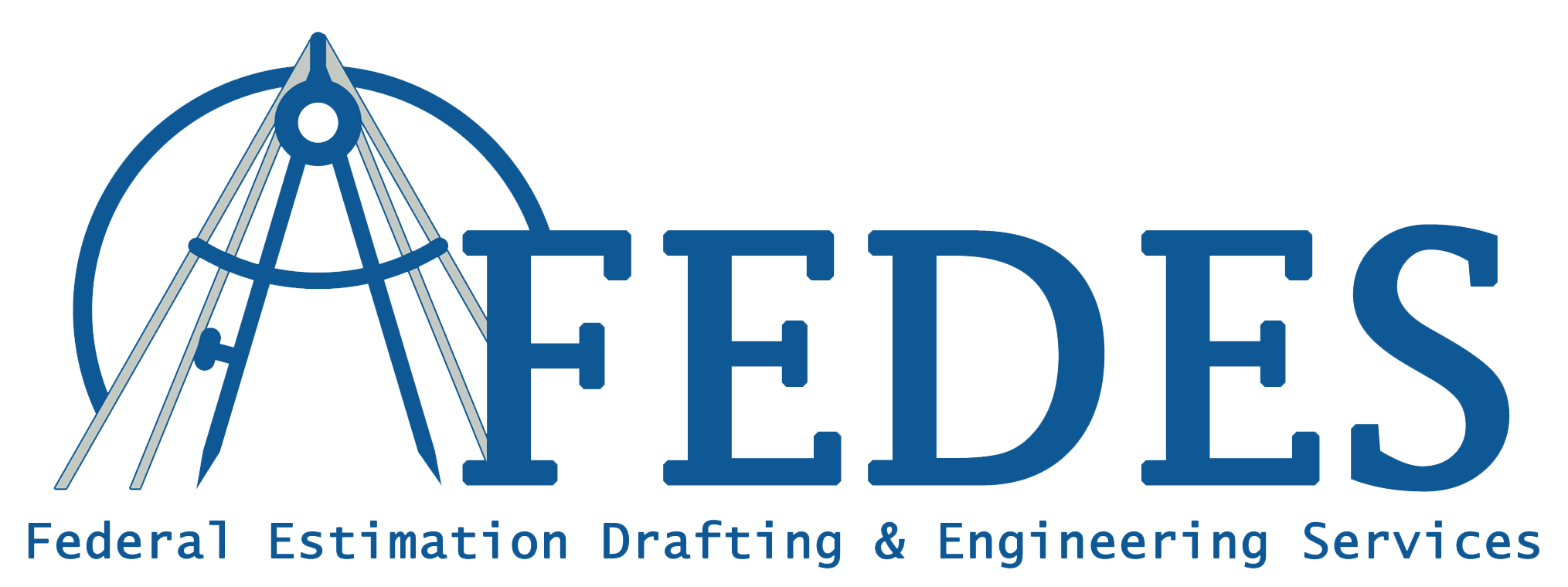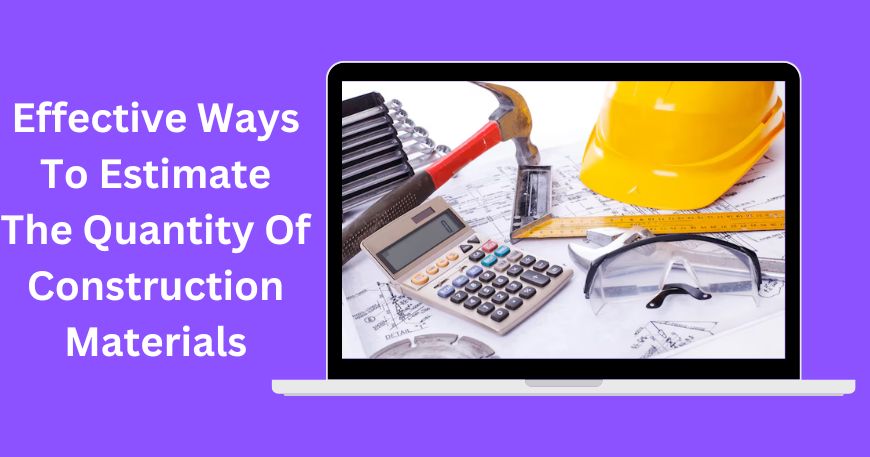Effective Ways To Estimate The Quantity Of Construction Materials
In the planning and budgeting of any construction project, it is very essential to estimate the quantity of materials. Ensuring that costs are covered and profit margins maintained is also vital. You have to comprehend all expenses involved to set the right project price.
In big companies, expert estimators, and smaller builders are hired to estimate and sometimes they calculate the quantity of material themselves. Precise estimation is very critical to prevent financial problems and keep clients happy.
In this blog, we have discussed some easy and effective ways to estimate the quantity of construction materials. So, read this blog from start to end to know these ways.
What Is A Material Estimate?
The material estimate is defined as the detailed calculation of costs and quantities of material that are needed for the completion of a construction project. It mainly involves:
- Identifying needed materials
- Measuring their amounts
- Assigning costs
- Accounting for waste
- Ensuring efficient budgeting
It also involves gathering details from the blueprints concerning the material and determining the quantities that are required for any construction project. The material estimate has some key components.
- Material Identification
- Quantity Takeoff
- Waste Calculation
- Pricing
- Labor and Equipment
Who Is Responsible For Doing A Material Estimate?
In this section, we shall tell you about some key characters who are responsible for doing material estimates.
| Estimator: They calculate the cost, material, and labor required for the project. |
| Contractors: They are responsible for accurate estimation of cost and materials etc. |
| Manager: They guarantee that the estimate coincides with the schedule and budget of a project. |
| QS: Quantity Surveyor calculates the quantities of material required for a project and guarantees that this project stays within budget. |
| Architectures: They provide clients with preliminary estimates based on design and ensure that the design is practicable within the client’s budget. |
What Is The Right Time To Do Estimates?
An estimator should do an estimate before construction begins, during the planning phases, and before finalizing the projects. Initial estimates help them to find out if the project is affordable or not. They secure their funding and make decisions. They also permit adjustment to any design if required to stay within the budget. This initial or early estimation will help you to run your projects smoothly.
Multiple Effective Ways To Estimate The Quantity Of Construction Material
There are several ways to estimate and in the below section, we are going to describe them one after one. So, read them comprehensively.
1. Blueprint Investigations
One of the most essential ways to estimate the quantity of construction material is a blueprint. Now you would probably be thinking what is this blueprint? Now we shall tell you about it and its key details.
Blueprint analysis involves a detailed examination of different drawings such as
- Architectural drawing
- Structural drawing
- Mechanical drawing
- Electrical drawing
Architectural drawing provides critical insight into the layout, dimensions, and features of any structure. These drawings also include
- Room Dimensions
- Wall thicknesses
- Floor plans
- Elevations
This analysis is very essential to calculate material quantities such as flooring, wall finishes, and paint. Structural drawings concentrate on the groundwork of the building, including beams, columns, and foundations.
Mechanical and electrical drawings: These drawings involve
- Plumbing
- HVAC systems
- Electrical wiring
- Other mechanical components
These drawings tell about the estimate of piping, ductwork, electrical conduits, and fixtures essential for construction. You can use digital tools such as CAD software, and BIM that boost efficiency, permitting accurate measurements and 3D visualizations.
2. Measurements And Calculations
You should measure the area, and volume of walls, roofs, ceilings, and other surfaces. Also, calculate the materials such as concrete, bricks, roofing materials, paint, etc.
Here we shall provide you with the formulas to find area and volume and also their examples through practical demonstrations.
| Formulae to find the area: Area of rectangle = Length × WidthArea of circle= π × (Radius)^2Area of triangle= (Base × Height) / 2 |
| Formulae to find volume:Volume = Area × HeightFor example, if we have to find the volume of bricks or tiles we shall use the formulae in such a way:Measure foundation area (length × width). Determine the required thickness (height).Multiply the area by height to get volume. |
3. Use Of Estimation Software
The estimation software offers multiple benefits and it is the most prominent way to estimate the quantity of materials. These estimation software have some key features such as:
- Material takeoff: This software automates the process of quantifying and guarantees precise measurements.
- Cost estimations: This feature provides a detailed cost of materials, and labor, and empowers budget predictions and financial planning.
- Bid management: This creates bids for projects and enables the comparison of subcontractors’ bids.
- Schedule: This software creates realistic timelines and permits time adjustments.
- Analytics and reporting: This software creates panoramic reports for stakeholders and amylases past project data.
Estimation software offers a lot of benefits and some of these benefits are described in the below section.
- Precision and accuracy: This software reduces the errors of humans and gives accurate measurements.
- Consistency: This software guarantees consistency in calculations and reporting.
- Scalability: Easily scales to house projects in different sizes and is reliable for all-size projects.
- Collaboration: This software is very important for better communication and sharing of updates and information.
- Efficiency: This software frees up time for other crucial tasks and speeds up the estimation process.
4. Account For Wastage And Losses:
One of the most essential tips for estimating the quantity of materials is accounting for wastage and losses. Now you would be thinking what is this wastage? Basically, there are three types of wastage:
- Materials and their handling, cutting, and fitting can produce operational wastage.
- Physical wastage involves breakage, spillage, and other forms of physical damage.
- Human wastage involves the mistakes committed by humans or workers during construction.
Some materials have different wastage percentages such as:
- Concrete: 2-7%
- Bricks: 5-19%
- Tiles: 10-18%
- Timber: 5-19%
We have some special formulas to calculate the wastage of any material such as:
| Formula:Total material required= (Base quantity needed) * (1 + wastage rate)For example, if 20000 tiles are required and wastage is 15% then the calculation will be:Required tiles=20,000 * (1 + 0.15) = 23,000 tiles |
But a majority of people are anxious about this waste and they want to reduce it. Here we have some effective tips to reduce wastage.
| Tips to reduce wastage:Employ accurate measurements to reduce cutting wastage.Employ techniques to protect against damage.Optimize material usage and reduce cut-off.Recognize wastage sources as soon as possible during construction. |
5. Consultations And References
Consultations and references play a key role in estimation. Interaction with experts can boost the quality of your estimation. Here we shall discuss in detail and tell you how can you enhance your estimation through this method.
- Interaction with experts: Engage closely with experts such as architects, estimators, contractors, and builders who can give you practical knowledge about material usage, wastage, and on-site adjustments.
- Industry-standard: Employ publications, manuals, and guidelines of the industry from any famous organizer. Ensure legality and safety.
- Past projects: Read the post-project evaluations to comprehend the efficiency of materials, wastage, and overall project outcomes.
- Field verification: Manage the site visits to verify the conditions, take measurements, and evaluate any variation between the plans and the actual site.
- Technical database: Employ material estimation database and cost guides. Access online resources and forums where professionals of any industry share knowledge and best practices.
6. Documentation
The most essential and crucial way for the estimation of construction material is to keep all records and documentation. It ensures precision and accountability throughout the project lifecycle. There are several types of documentation.
- Estimation sheet: These sheets list quantities and unit prices.
- Measurements records: These include dimensions and calculations to estimate the quantity of material.
- Material Specifications: These sheets involve manufacturer data sheets and technical information.
- Project Plans and Drawings: New and up-to-date copies of all project plans and blueprints.
Now we are going to provide you with some documentation practices.
- Clear labeling: Label all projects and documents with name, date, and versions.
- Detailed notes: have detailed notes and comments that will explain the rationale behind them.
- Standard formats: You should use standardized formats for all documents to guarantee ease of comprehension.
7. Environmental Factors
Environmental factors have their own special role in the estimation of materials. There are a lot of environmental factors that enhance your quality to estimate the quantity of materials. Let us explain them one after one.
- Climate conditions: Have materials that are reliable and suitable for the local climate and weather conditions. For example in areas where it rains water-resistant use materials.
- Sustainable materials: Employ materials that are reclaimed. For example recycled steel, and reclaimed wood.
- Energy efficiency: Forecast the quantity of material required to enhance energy efficiency and decrease the cooling or heating demands.
- Water conservation: Have materials for rainwater harvesting and greywater recycling systems to reduce water usage.
- Waste management: Optimize materials to reduce off-cuts and sewage. Recycling can be very beneficial in reducing waste things.
- Renewable energy sources: Use solar panels or any other sources to integrate renewable energy sources.
- Lifecycle analysis: Select long-lasting materials that need fewer replacements. Prefer materials that can recycled or remaintained.
8. Continuous Improvements
One of the most profitable and valuable tips to enhance your ability to estimate the quantities of material. Implementing this strategy can lead to better project outcomes and cost savings. Below are detailed aspects.
- Regular feedback: Perform panoramic reviews when a project is completed. This is essential to assess the precision and accuracy of material estimates.
- Training: Motivate your team members to obtain relevant certification from recognized institutes.
- Technology integration: Update estimation software repeatedly for new features, improved logarithm, and better integration capabilities.
- Data management: Implement solid data collection practices to collect information on materials usage, and project performance.
- Process standardization: Develop standardized techniques for material estimation to ensure reliability across projects.
- Quality control: Lead regular audits of materials and the estimation process and track improvements over time.
- Sustainability: Find ways to integrate with sustainable materials and perform lifecycle analysis of materials to understand their long-term environmental impacts.
Also, Read Our Other Post.
The Ultimate Guide To Commercial Estimating Services
Conclusion
Estimating the materials is very essential for completing a project. It guarantees and ensures better work. Begin with a comprehensive and detailed project plan and accurate site measurements. Update estimates more than twice based on project changes.
Select eco-friendly materials to target sustainability materials and to minimize waste. These practices guarantee effective resource utilization, cost management, and project completion on time. At Federal Estimating, we emphasize the importance of mastering these tips to enhance the quality of your estimating.




